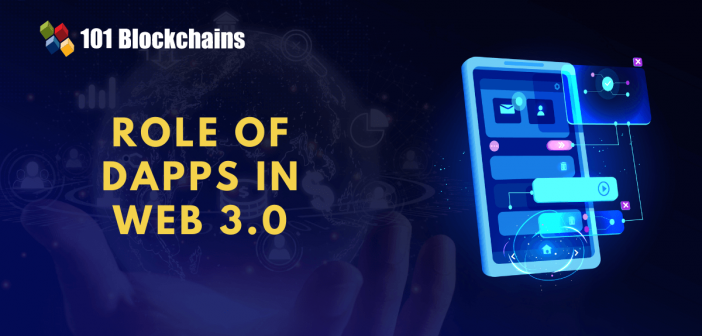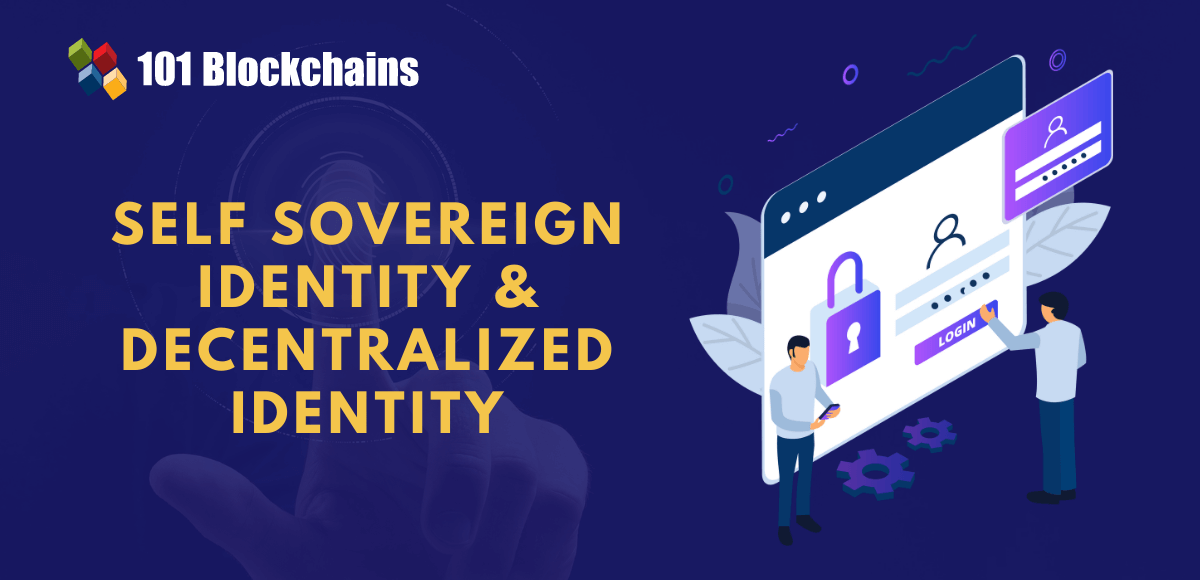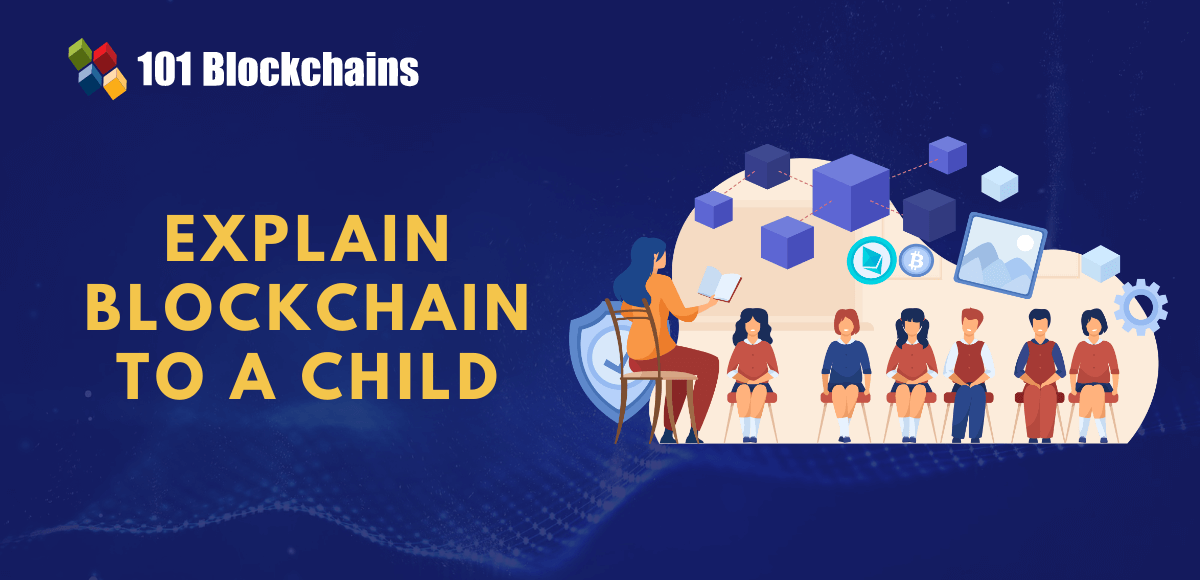Technological advancements and innovation have shaped the world around us. One of the biggest examples of revolutionary technology is the internet. Many scientists, computer engineers, and programmers have developed the internet as a massive hub of information and communication. Over the course of time, the internet has evolved through many stages, culminating in the generation of web 3.0.
At the same time, the impact of blockchain in the web3 revolution has brought the limelight to the role of dApps in web 3.0 and how they bring value. The arrival of web3 invited a new breed of applications featuring the benefits of decentralization, immutability, and transparency. However, it is also important to find out how dApps can empower the web3 landscape. The following discussion reflects on the significance of dApps in web3 along with practical examples.
Want to learn blockchain technology in detail? Enroll Now in Certified Enterprise Blockchain Professional (CEBP) Course
What is Web 3.0?
Before moving towards the importance of dApps in web 3.0, it is required to identify the definition of web 3.0 itself. It is the third generation of the internet, which helps websites and applications process information in smart ways. The support of new advancements such as artificial intelligence, big data, blockchain technologies, and machine learning can help in empowering a new generation of digital applications.
Where do dApps fit in the overall web3 landscape? As a matter of fact, you can develop a better understanding of web3 dApps only by reflecting on the important traits of web 3.0. The future of web3 demands universal applications accessible on multiple devices and software, with assurance of improved convenience in commercial as well as recreational activities.
Important Highlights of Web 3.0
The rise of data decentralization alongside a secure and transparent environment would depend profoundly on growth of new technologies such as blockchain storage and distributed ledgers. In the web3 landscape, people can find the route to a decentralized web that allows users to exercise rightful control over their data.
At the same time, decentralized infrastructure alongside application platforms can replace conventional models of centralized tech firms. You can understand the role of decentralized applications in web 3.0 by diving deeper into the properties of web3 ecosystem. Here are the notable traits of web3, which offer the favorable grounds for growth of decentralized applications.
-
Semantic Web
The semantic web concept is one of the notable components in web3, which focuses on meaning or emotion underlying messages. Semantic web can help in supporting the initiatives for helping computers learn about the meaning of the data. It can enable AI to develop real-world use cases providing opportunities for better use of data.
-
3D Graphics
The role of dApps in web 3.0 would also focus frequently on transforming the two-dimensional web into a three-dimensional one. New websites, services, and applications in web3 must be immersive with a 3D design, thereby specifying the new dApps design.
-
Artificial Intelligence
Machine learning and artificial intelligence would take foremost priority in the web3 landscape. AI can play a crucial role in designing web3 dApps with the capabilities for collecting customer feedback to develop a better understanding of product or asset quality. On top of it, artificial intelligence can differentiate between reliable and bad data sources to provide credible information.
-
Availability
The availability of digital experiences to users irrespective of their location is one of the notable traits you can find in web3. As a matter of fact, you can find the same highlight in the case of social media platforms that dominate the web2 landscape. If you look closely, the next improvement in web3 will focus on enabling access to digital services through any type of device, including IoT devices.
Get familiar with the terms related to Web 3.0 with Web 3.0 Flashcards
Necessity of Decentralized Applications
The discussion on the importance of dApps in web 3.0 would also rely on an understanding of decentralized applications. Amidst the rapid pace of technological developments, almost every new advancement focuses on keeping us updated. Today, we have multiple applications on our smartphones and computers for help with access to complex services.
Now, it is important to note that people have to grant some form of access to their private information for using the apps. For example, users have to enter their location data, contacts, photos, and other personal information for using the applications. These data points can deliver a comprehensive impression of user preferences and the patterns in their behavior.
Even if the notion of offering your personal information to credible centralized parties can seem reasonable, you must think of the underlying consequences. How do enterprises use the data you offer them for using their applications? The companies use your personal information for targeted advertisements. Enterprises show content to users who can ensure benefits for the organization rather than the users.
Decentralized apps or dApps can help in eliminating the intermediaries such as the enterprises. They can help users in availing different services without the risk of censorship for their content. On top of it, top web3 dApps examples show how users can avail digital services without the risks of termination of their accounts. Most important of all, decentralized applications prevent the leakage of personal information to unwanted third parties.
Value of Decentralization in dApps
The development of decentralized applications on blockchain technology is one of the biggest highlights of the digital landscape. dApps can remove the authority of one particular organization exercising sole authority on its users. In addition, decentralized applications also remove the risks of centralized authorities intruding on user privacy. End users exercise complete control and ownership over their data in dApps alongside the privilege of deciding the precedents for sharing data with third parties.
The design of web3 dApps would show the use of a distributed system that offers freedom from any malicious attempts at disrupting service. For example, the system would be less likely to have any downtime due to DDoS or Distributed Denial of Service attacks. Since you don’t find data in the vaults of a specific organization, you would find limited possibilities for hacking the dApp network.
On top of it, decentralized applications also feature censorship resistance alongside a permissionless approach. As a result, users could enjoy the services of any decentralized application without any discrimination. Furthermore, dApps also features high levels of transparency while being trustless, thereby ensuring true decentralization.
Start learning Blockchain with World’s first Blockchain Skill Paths with quality resources tailored by industry experts Now!
Applications of dApps in the Web3 Landscape
The discussion on role of decentralized applications in web 3.0 would also focus on the use cases of dApps. A clear overview of the use of dApps for driving value-based improvements across various sectors is quite imperative. You can discover the following important applications of dApps in different sectors.
-
Social Media Applications
The first entry in web3 dApps examples would draw attention to social media applications. Majority of social media platforms, such as Instagram and Facebook, have emerged as integral highlights in the life of an individual now. Now, it is important to note that social media platforms have control over the personal information and other important data of users. Therefore, the need for decentralization in social media applications is an obvious necessity amidst the rising voice for data privacy.
If dApps find applications as social media networks, users can have better control over their data. You can explore the scope for plausible improvements in privacy of users alongside security of user data. The lack of a central authority offers the freedom from concerns about third parties capturing or leaking precious user data. Some of the popular examples of dApps serving as social media platforms include Steemit and Sapien.
-
Cloud Storage
The role of dApps in web 3.0 also becomes evident in the use cases for cloud storage. As of now, the existing data storage servers, such as AWS, are completely centralized in nature. Therefore, it is more likely that the data stored in such servers can be modified or even distributed to third parties without user consent. On the contrary, decentralized solutions for data storage would avoid storing their data on a centralized server.
Decentralized apps would leverage a distributed file system for data storage wherein data transfer is encrypted. Another important highlight in the applications of dApps for cloud storage refers to the division of data into multiple fragments. Subsequently, users can retrieve the fragments according to their requirements. Some of the notable examples of dApps in cloud storage services include Sia and Storj.
Want to become a certified blockchain security expert? Enroll Now in Certified Blockchain Security Expert (CBSE) Course
-
Browsers
One of the interesting applications of web3 dApps would also draw attention toward browsers. Conventional browsers such as Firefox and Google are basically centralized platforms. On top of it, the centralized nature implies that the browsers can store personal information of users such as location, social media information, passwords, and other details.
It is important to note that decentralized browsers will be a necessity in the web 3.0 landscape. Why? The answer is quite simple and evident in the term ‘decentralization.’ After all, decentralized browsers will be a staple highlight in the new decentralized web 3.0 ecosystem. The Brave browser is an example of a decentralized browser that can empower the web 3.0 landscape.
-
Streaming Applications
Entertainment will also be one of the significant highlights in web3 dApps examples as the world embraces the concept of a decentralized web. Popular streaming applications such as YouTube, Netflix, Amazon Prime Video, and Spotify are centralized in nature. The centralized platforms could impose censorship on user content alongside exposing users to target advertisements campaigns.
Now, the applications of dApps in the field of music and video streaming apps can introduce plausible improvements. First of all, content creators can receive reasonable value for their efforts alongside resolving the problems of copyright. The notable examples of dApps for music and video streaming include LBRY and UjoMusic.
-
Messaging Applications
The final and most important use case of dApps would refer to messaging dApps. You can understand the importance of dApps in web 3.0 when you figure out the vision for introducing private, decentralized messaging. Almost 3 billion people all over the world use different messaging apps, with a circulation of almost 145 billion messages on a daily basis.
Secure and private messaging has evolved as one of the prominent needs in the web3 landscape for avoiding privacy violations, data hacks, and cyber thefts. The most promising example of messaging dApps would refer to Secretum, which has been developed on the Solana blockchain platform.
Start your blockchain journey Now with the Enterprise Blockchains Fundamentals – Free Course!
Final Words
The role of decentralized applications in web 3.0 extends beyond the scope of decentralization. Decentralized applications can introduce improved security alongside serving value advantages in different use cases. You can notice the transformation of many conventional digital services such as cloud storage and content streaming platforms.
The revisions introduced by dApps in the conventional services can help in easier transition towards web3. Many enterprises are gradually recognizing the importance of dApps for growing the web3 revolution. On the other hand, businesses must prepare for the web 3.0 transformation by following the necessary best practices. Learn more about decentralized applications and web 3.0 before you adopt any web 3.0 dApps.
Join our annual/monthly membership program and get unlimited access to 25+ professional courses and 55+ on-demand webinars.




